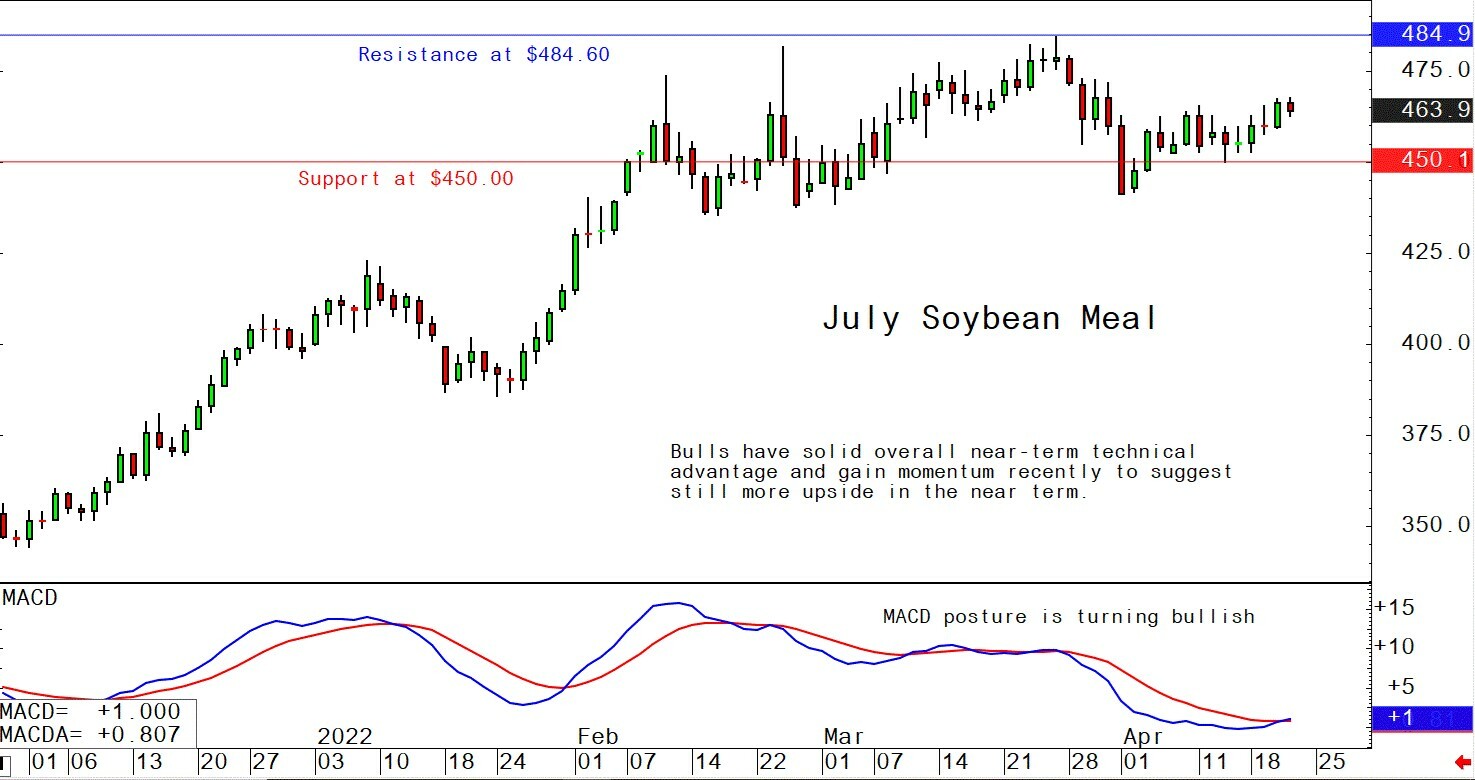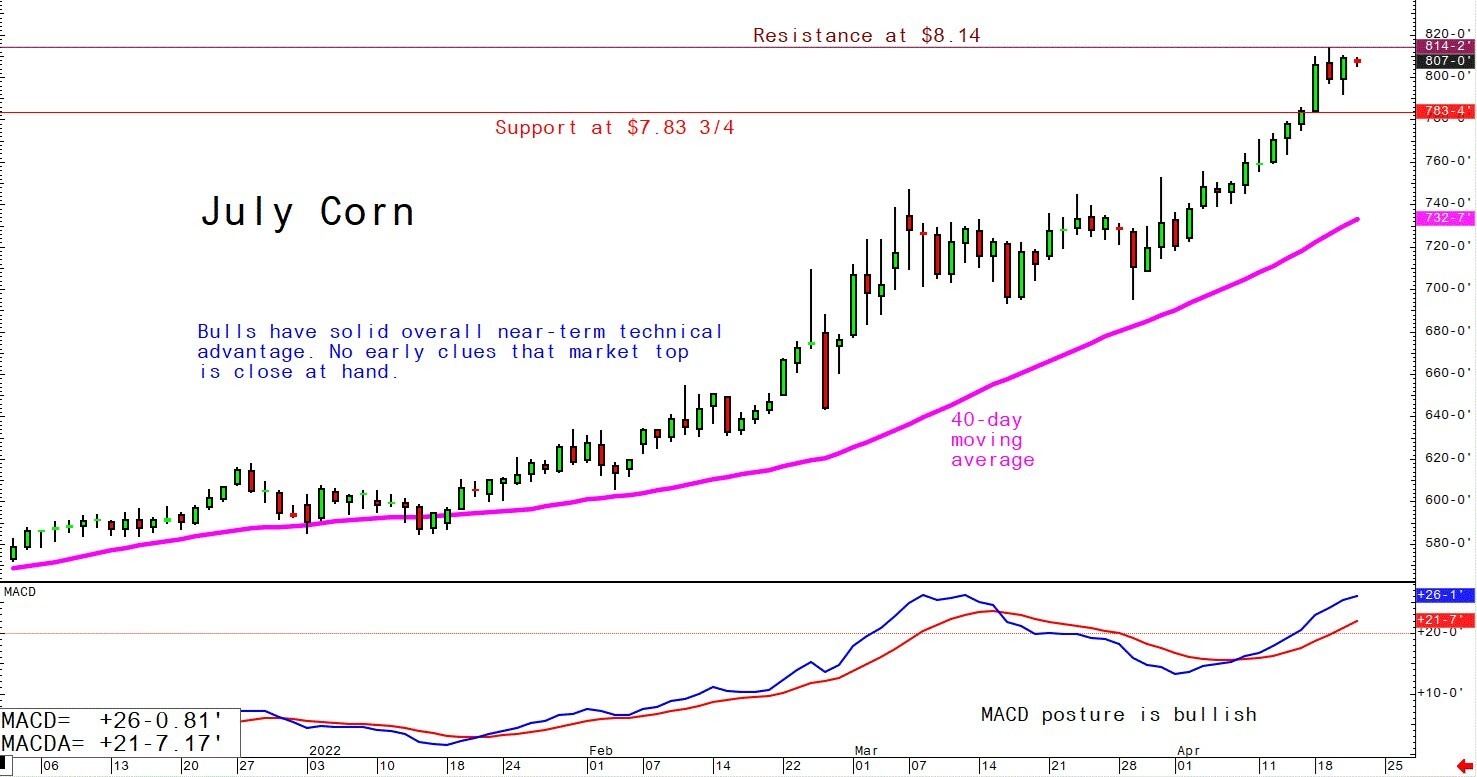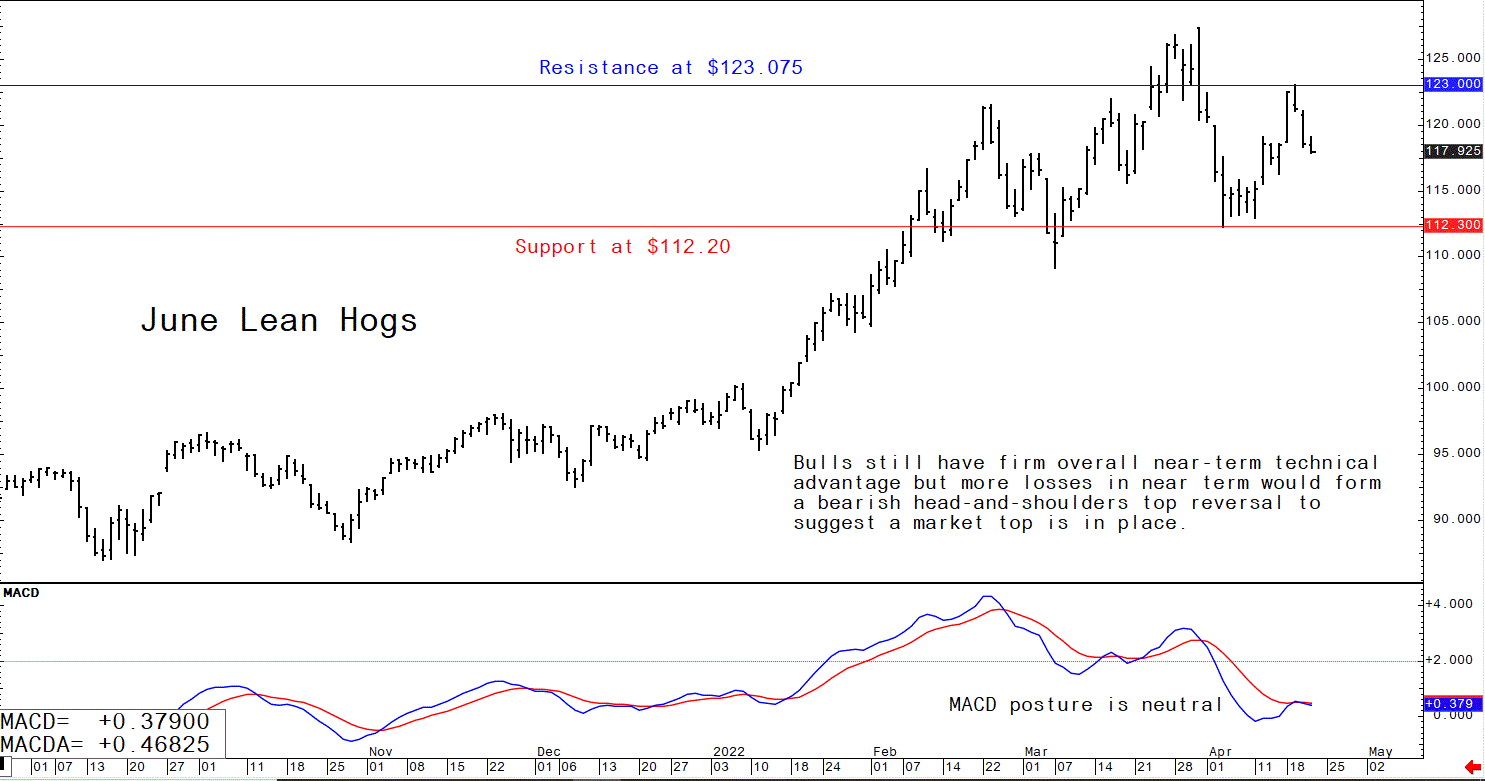



Pig outlook: Lean hog futures bulls still in control
Analyst Jim Wyckoff shares the an update on the US futures market, USDA reports and global swine newsThe pig traders’ perspective
Even after sharp losses on Wednesday, June lean hog futures still finished nearly $18 above the latest CME cash hog index. Buying in summer-month hog futures may be limited until the cash market shows stronger price gains. The near-term technical posture for lean hog futures has also become less bullish. Weakness in wholesale pork is of concern, too. Neither the cash hog nor wholesale pork markets are exhibiting the kind of strength seasonal patterns that should be emerging at this time.
US Pork, beef export sales slump in latest week
USDA on Thursday reported weekly US pork net export sales of 12,900 MT for 2022--a marketing-year low--were down 46 percent from the previous week and 55 percent from the prior 4-week average. Increases primarily for Mexico (4,700 MT, including decreases of 600 MT), South Korea (2,800 MT, including decreases of 1,300 MT), the Philippines (1,300 MT), Canada (800 MT, including decreases of 500 MT), and the Dominican Republic (700 MT), were offset by reductions for China (100 MT). Exports of 28,200 MT were down 11 percent from the previous week and 6 percent from the prior 4-week average. The destinations were primarily to Mexico (11,600 MT), Japan (4,600 MT), China (3,800 MT), South Korea (2,700 MT), and Canada (1,300 MT).
US beef net sales of 15,000 MT for 2022 were down 13 percent from the previous week and 27 percent from the prior 4-week average. Increases were primarily for Japan (4,600 MT, including decreases of 700 MT), South Korea (4,100 MT, including decreases of 700 MT), China (2,500 MT, including decreases of 700 MT), Canada (1,000 MT, including decreases of 100 MT), and Taiwan (600 MT, including decreases of 100 MT). Exports of 21,000 MT were up 13 percent from the previous week, but down 16 percent from the prior 4-week average. The destinations were primarily to South Korea (6,800 MT), Japan (5,200 MT), China (3,600 MT), Taiwan (1,200 MT), and Mexico (1,000 MT).
Chinese pork output expected to rise 2.9%
China’s pork production is forecast to rise 2.9% to 54.5 MMT this year as the country’s hog sector continues to expand after being sharply reduced by African swine fever. But the rise in production has oversupplied the market, which along with high feed costs, has caused negative hog production margins for hog farmers. A Chinese ag ministry official forecasts Chinese hog farmers should see a return to profitable levels by the third quarter of this year, as he expects feed prices will decline. But he also warned hog farmers against heavy sow liquidation.
Meantime, hog production losses in China have been increasing due to rising animal feed prices and weak pork rates. Losses widened to about 300 yuan ($47) per head in March, from about 200 yuan in February. Pork and hog prices are about to recover, costs and selling prices may match in June, Ma noted. A sustainable financial support system is needed to keep hog production stable.
China’s pork exports plunge in March as domestic production rises
China imported 140,000 MT of pork last month, down 70% from the previous year. Through the first three months of this year, Chinese pork imports totaled 420,000 MT, down 64.2% from the same period last year. A strong increase in domestic production has sharply reduced China’s domestic pork prices and the need to import foreign supplies. China’s pork production totaled 15.6 MMT in the first three months of this year, up 14% from the same period last year and the highest quarterly output since the fourth quarter of 2018. China’s hog herd declined to 422.5 million head at the end of March, down from 449.2 million head at the end of last year.
CEOs from major US meatpackers to testify to Congress on beef prices
Chief executives of Tyson Foods, Cargill, JBS and National Beef Packing will testify at a House Agriculture Committee hearing on beef prices and competition in cattle markets, the House Ag Committee announced. “It is very important, very vital, and very urgent that we hear the perspectives from the CEOs at these companies and get the full picture of why prices have gone up for consumers and down for ranchers,” House Agriculture Committee Chairman David Scott (D-Ga.) said in a statement announcing the executives agreed to testify. Scott previously announced an April 27 hearing to “determine whether anti-competitive behavior by the largest meatpacking companies caused increased beef prices, and unfair difficulties to ranchers and farmers, to the detriment of U.S. food consumers.” Consumer prices for beef and veal in March were up 16% from a year earlier, outpacing an overall inflation rate of 8.5%, according to Labor Department data.
The next week’s likely high-low price trading ranges:
June lean hog futures--$115.00 to $123.075, and with a sideways bias
July soybean meal futures--$450.00 to $484.60, and with a sideways-higher bias
July corn futures--$7.50 to $8.25, and a sideways-higher bias
Latest analytical daily charts lean hog, soybean meal and corn futures










